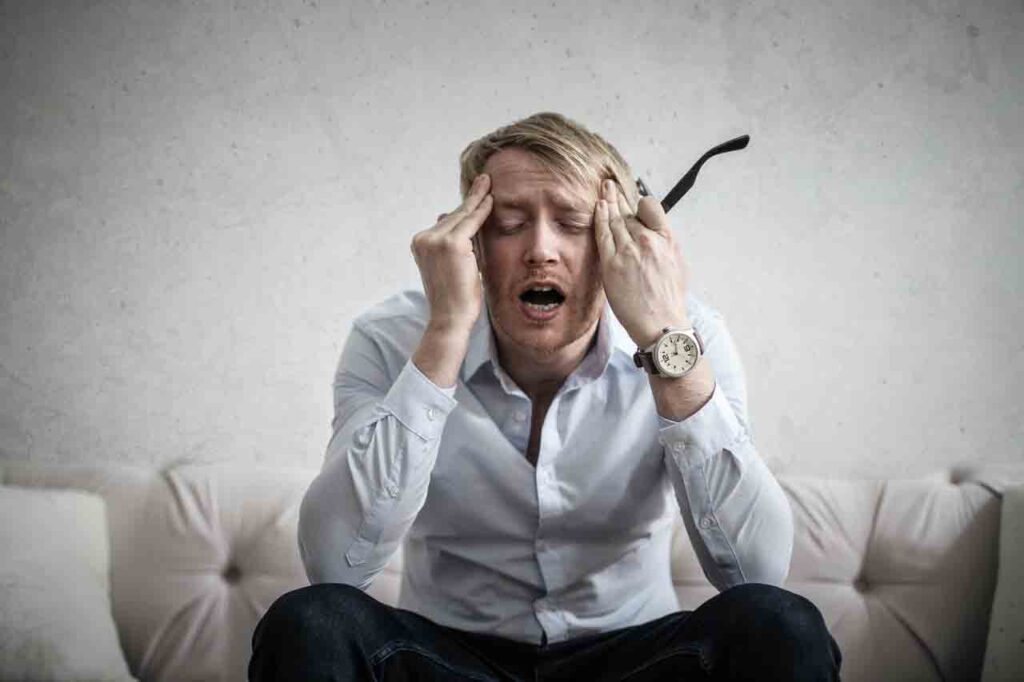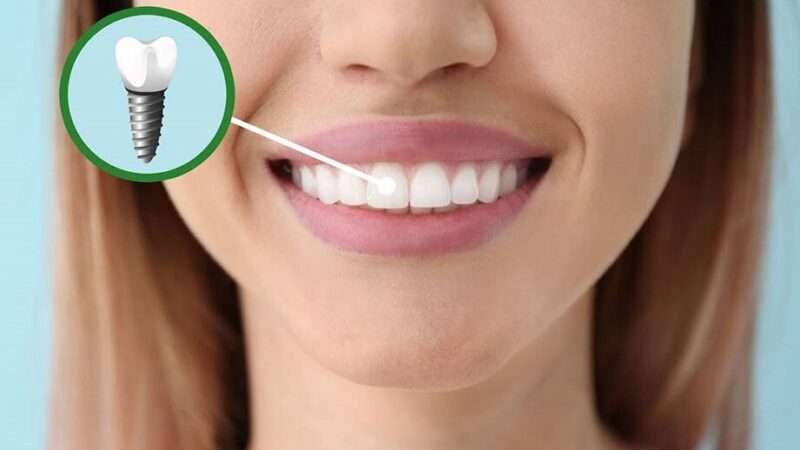Depression: Symptoms, How to Deal
YOU CAN LOVE FAMILY AND FRIENDS, BUT NOT FEEL THE JOY OF COMMUNICATING WITH THEM. HAVE THE PERFECT JOB, BUT NOT FEEL THE SATISFACTION OF IT. BEING BEDRIDDEN DESPITE SEEMING PHYSICAL HEALTH. THE REASON FOR THIS IS DEPRESSION.
In everyday life, the concept of “depression” is blurred. This word refers to a bad mood, sadness, depression, unwillingness to do something. All of the above may be symptoms of depression, but it is not. Sadness gradually goes away by itself and does not interfere with functioning in society – depression deprives a person of a full life.
What is depression?
Depression is a mental disorder during which a person’s activity and interest in life decrease.
According to the World Health Organization (WHO), about 350 million people worldwide suffer from depression. Less than 50% of them receive treatment and in some countries less than 10%. Many patients do not seek help, unaware of the presence of the disease, and blaming themselves for laziness or bad character.
What happens in the body with depression?
In depression, the limbic system of the brain works differently – it is responsible for emotions, memory, sleep, and other processes in the body. Normally, the prefrontal cortex processes the information received from the hippocampus and “slows down” the fear and anxiety that the tonsil activates.
Prefrontal cortex
- Processes information
- It inhibits the excessive activity of the tonsils.
- Affects motivation and decision making, regulates behavior.
Hippocampus
- Participates in the formation of emotions, the transition of short-term memory to long-term, as well as in maintaining attention
Tonsil
- Activated in case of fear, anxiety.
- Responsible for the formation of autobiographical memories associated with emotional outbursts.
During the depression, the number of neurons and contacts between nerve cells decreases, the volume of the hippocampus and the prefrontal cortex decreases, and the size of the tonsil changes up or down. Therefore, the prefrontal cortex cannot fully inhibit the activity of the tonsils and process information from the hippocampus – hence uncontrolled anxiety, depressed mood, and the absence of positive thoughts.
Prefrontal cortex
- Information is not processed correctly.
- Tonsil activity is not inhibited
- Motivation decreases, behavior changes, anxiety appears
Hippocampus
- Decreases volume
- Deteriorates mood and memory, decreases the concentration
Tonsil
- Resizes
- Fear, anxiety starts; mental disorder develops
Depression is characterized by a deficiency of neurotransmitters – chemicals that transmit excitation from one nerve cell to another through networks of neurons. There is a shortage of three mediators:
- Norepinephrine – participates in the inhibition of sleep centers in the central nervous system, is responsible for concentration, memory and motivation, general motor activity. It affects how we respond to stress and show emotions.
- Serotonin – is responsible for sleep, mood, control of aggression, regulation of appetite, sensitivity to pain.
- Dopamine – is responsible for feelings of satisfaction, love and affection, participates in the learning process, and switching attention.
Endorphin production is also reduced. They are responsible for “anesthesia”, reducing the pain signal to bearable – both during physical injuries and in a stressful situation. This explains the poor tolerance of stress and pain in people with depression.
How a person feels with depression

In depression, cognitive biases are haunted – thinking errors that interfere with rational thinking. “No one understands how painful I am,” “everything is bad,” “nobody needs me,” “everything falls apart,” “I don’t deserve life” – a feeling of loneliness and alienation accompanies everywhere, even if a person realizes that facts do not confirm these destructive thoughts.
Any daily activity requires a lot of effort. Get out of bed, meet with a friend, cook dinner – for such simple actions a person with depression makes as much effort as a healthy person – to climb Mount Everest. Previous interests, aspirations, desire lose their meaning. Food loses its former taste. Thoughts become confused, attention becomes distracted, the sharpness of the mind turns into inhibition. Appetite decreases or, conversely, increases if there is a habit of “seizing” negative experiences. Insomnia or excessive drowsiness begins.
We offer a look at the video, which shows the feelings characteristic of people with depression. Symptoms, feelings, and thoughts differ depending on the type of disorder and individual characteristics.
Types of Depression
There are many classifications of depressive disorders. Some are not relevant for a long time, some are debatable. We tried to combine the main types of depression, which are distinguished by ICD-10, the World Psychiatric Organization, and some researchers (D. Hell, V. A. Torchilov, and V. L. Minutko) into subgroups.
By severity
- Light – difficult to distinguish from sadness and melancholy. The set of symptoms and their severity do not yet allow a clear diagnosis of depressive disorder, but with a high degree of probability, a person will experience depression in the future. This condition is also called sub depressive or subsyndromal (minor) depression.
- Moderate – the clinical picture is clear, but a person can fully (or almost fully) function in society.
- Severe – pronounced symptoms up to the loss of functionality, delusions, or hallucinations.
By origin
- Endogenous – does not depend on external influences, only on internal causes – for example, due to heredity.
- Reactive (exogenous, psychogenic) – develops under the influence of external stress: the death of a loved one, loading at work, breaking up relationships, etc.
Often depression is difficult to attribute only to endogenous or only reactive – the disorder in most cases is due to both external and internal factors.
- Primary – depression was not preceded by other mental illnesses and it is not caused by the intake of any chemicals.
- Secondary – caused by other disorders and diseases (schizophrenia, alcoholism, brain pathology) or the use of narcotic substances/drugs. Depression due to somatic (“bodily”) causes is also called somatogenic.
By type of phase flow
- Unipolar (monopolar) – a depressive state is stable throughout the disease.
- Bipolar disorder (manic-depressive psychosis) – the phase of depression is periodically replaced by a phase of manic – excitement, hyperactivity, high mood, outbreaks of anger, etc.
- Dysthymia is a chronically depressed mood for two or more years without severe symptoms.
- Cyclothymic is a “mild” form of bipolar disorder, in which the mood is constantly changing from elevated and excited to depressive and vice versa. The mood change is irregular and lasts several days.
By seasonality
- Seasonal affective disorder – occurs depending on the season, usually in the fall or winter.
- Non-seasonal disorder – manifests itself regardless of the time of year.
By driving effect
- Anxious – anxiety, anxiety, panic attacks predominate.
- Sad – there is a sad, melancholy mood, tearfulness.
- Apathetic – characterized by apathy, lack of interest in anything, dull feelings.
- Undifferentiated – it is impossible to single out any of the effects as a leader.
By type of disorders in the motor or ideator sphere
- Inhibited (adynamic) – characterized by impaired concentration, increased fatigue, memory impairment, cases of inability to move and perform even simple actions.
- Agitated – among the symptoms noted are motor anxiety, a sense of fear, a rapid heartbeat, and strong emotional arousal.
- Mixed – combining signs of lethargy and agitation.
- Dissociated – without violations in these areas.
Disorders not included in subgroups
- Adaptation disorder is an emotional disorder under the influence of severe stress that occurs during the period of adaptation to changes and interferes with a full life.
- Atypical depression – specific symptoms include symptoms: increased emotional reaction, weight gain, drowsiness, avoidance of interpersonal contacts.
- Resistant depression – not amenable to treatment with antidepressants for at least two consecutive courses of 3-4 weeks.
- Anxiety disorder – combines the features of anxiety disorder and depression, and it is difficult to distinguish one thing as primary.
- Postpartum (postnatal) depression.
Seasonal depression

The reason for the autumn spleen is understandable: a sunny day is declining, air temperature is dropping – hence drowsiness, deterioration of mood, and lack of energy. But “autumn depression” is not just melancholy. It cannot be cured by watching comedy series.
Among specialists, the term “seasonal affective (depressive) disorder” is used. Symptoms are similar to normal depression: loss of interest, irritability, low concentration, changes in sleep patterns, and appetite. More often than with other types of depression, there is overeating and excessive sleep.
Manifested seasonal affective disorder in the fall or winter. Such a diagnosis can be made if the symptoms are observed at least twice in the cold season and never at any other time for two years or more.
Finding out how to get rid of autumn blues and depression, scientists have suggested that the disorder is due to a decrease in sunlight. This affects the hypothalamus, which helps in the functioning of the nervous and endocrine systems.
Also, in seasonal disorder, the brain produces an increased amount of melatonin, a hormone that controls sleep and wake cycles. From here there are problems with sleep, inexplicable fatigue, and apathy. At the same time, a decrease in the level of sunlight causes a decrease in the production of serotonin, which affects our mood, appetite, and sleep.
How to cope with autumn depression? Doctors advise getting as much sunlight as possible during the day: go outside more often, sit next to windows, and in well-lit rooms.
When thinking about how to get rid of autumn depression, you should make sure that it is not associated with stress, somatic causes, or heredity. This can be clarified at a specialist appointment.
Depression in women

According to statistics, there are 2 times more documented cases of depression in women than in men (“Gender Features of Depressive Disorders in Women”). The cause of depression in women can be hormonal changes: changes in the menstrual cycle, pregnancy, miscarriages, the postpartum or premenopausal period, and menopause.
Also, depressive disorders can include premenstrual dysphonic disorder, when a woman becomes depressed before the cycle begins – more pronounced than with typical premenstrual syndrome (PMS).
Postpartum depression, which affects 13% of mothers, is isolated in a separate form. 50% of them showed depressive tendencies even before pregnancy.
Young mothers spend enormous energy on caring for a child and therefore forget about themselves and their mental state. This is fraught with eating disorders, sleep, and other symptoms.
Before a woman to fight depression on her own, it is recommended to consult a specialist. Depressive disorder in the mother leads to a disruption in the interaction of the mother and the child, which can lead to deviations in mental, emotional, and physical development.
Depression in men

Perhaps the low number of reported cases of depression in men is associated with the stigmatization of this disorder in males (stereotypes such as “a man must be strong”, “a man should not worry about problems, but solve them,” etc.). Therefore, it is more difficult for men to understand how to deal with depression, and to admit the presence of a disease associated with emotions.
In some cases, depression is unknowingly masked by irritability and aggression, immersion in work and career, alcoholism, and other addictions.
Depression in children and adolescents

Unwanted behavior of a child can be attributed to laziness or whims, but often a serious reason is hidden behind the unwillingness to learn, eat, or sleep. Depression develops even in young children. The smaller the child’s age, the more somatic symptoms he has: colic, pain, insomnia, constant crying. When the child’s awareness increases, other signs appear: he loses the desire to get up in the morning, interest in toys, and learning new things; there are attacks of fear, sudden mood swings. If symptoms occur within two weeks or more, you need to meet with a psychologist specializing in working with children.
Causes of depression
Several factors contribute to depression:
- Biochemistry. With depression, the activity of the brain and neurotransmitters changes.
- Genetics. The effect of heredity on the development of depression was investigated using bipolar disorder as an example. Direct relatives of bipolar patients have a 15 times higher risk of developing depression than relatives of healthy people. If one of the parents suffers from the disorder, children develop depression in 25% of cases; if both parents – in 75% (Minutko V. L., “Depression”).
- Personal features. People with low self-esteem may think that they are not worthy of love and recognition. With pronounced perfectionism, all energy is aimed at achieving the ideal result – burnout occurs. Persons prone to dependence in relationships and living their lives through another person are also prone to depressive states: losing self-awareness as a separate unit and not leaving themselves personal space when parting, they experience the loss of a loved one like the loss of themselves.
- External factors. The low level of life and security in the country, the social characteristics of the state (for example, oppression of minorities), cases of violence (both physical and psychological), the loss of a loved one can make a person more vulnerable to depression if he was initially predisposed to affective disorders.
Symptoms of Depression

A clinical psychologist, psychotherapist, or psychiatrist diagnoses depression. But you can determine the presence of depressive tendencies on your own. For this, tests created by professors of psychiatry are used – the Zang scale or the Beck scale.
The main symptoms of depression:
- An ongoing feeling of depression, anxiety, hopelessness, emptiness
- The desire for self-isolation, the limitation of contacts with loved ones, the desire to stay home all the time
- Feeling guilty, worthless, helpless
- Tearfulness
- Feeling of loneliness
- Fatigue, retardation
- Problems with memory, concentration
- Vulnerability: a person with depression is easier to hurt and offend
- The feeling that no one understands, does not sympathize, does not like
- Sense of inferiority compared to other people
- Sleep disorders: insomnia, intermittent sleep or its high duration, constant drowsiness
- Difficulty in making decisions
- Feeling that thoughts slip away or get lost
- Excessive overheating or lack of appetite
- Feeling that it takes a lot of effort to perform simple actions
- Loss of interest in activities and hobbies that used to be fun
- Thoughts of death or suicide, attempted suicide, self-harm, desire to harm oneself, “punish” oneself
- The untreatable symptoms of physical discomfort: headaches, digestive upsets, nerve tics, chest pain, heart pain, etc.
If you observe several symptoms at the same time for 2 weeks or more, this is an occasion to consult a specialist.
Diagnosis and treatment of depression

A clinical psychologist, psychotherapist, or psychiatrist conducts a conversation with the patient, asks leading questions: how the symptoms appear, for how long, whether deterioration or improvement of well-being was observed. Diagnostics can use tests and questionnaires. In some cases, the doctor will refer you to other specialists (for example, a cardiologist if the heart is bothering) to rule out the physical causes of this condition.
Depressed patients are hospitalized in exceptional cases – for example, if there is a real threat of suicide or delusions and hallucinations appear.
The approach to treating depression depends on the cause of its occurrence:
- Depression is endogenous, i.e., independent of external circumstances. The main method of treatment is pharmacotherapy. For anxiety and anxiety, antidepressants of a sedative effect are prescribed, with apathy and melancholy – a stimulating effect. If symptoms of both groups are present, balanced-acting drugs are used.
- The disorder arose amid stress. It is necessary to study the causes of stress in psychotherapy. Together with a specialist, you will understand what mechanisms your psyche triggers and how to rebuild them to feel better. It is possible to cure such depression without drugs, but if the symptoms are pronounced and the patient feels unbearable, the doctor can prescribe a course of antidepressants.
- Depression is a reaction to somatic diseases. It is necessary to cure the root cause of the depressive disorder and only then resort to symptomatic pharmacotherapy and psychotherapy.
Antidepressants have side effects: Take them only as directed by your doctor. If you feel that the drug has a strange effect on your mood and condition, be sure to contact a specialist again – he will adjust the dosage or choose another treatment.
How to deal with apathy and depression on your own
The best ways to deal with depression are psychotherapy and treatment as prescribed by your doctor. However, there are several ways to deal with stress and depression on your own.
Any work, including psychological, is not easy for depression, but taking care of you will significantly speed up recovery.
Fix your condition A person prone to depression is not always able to express his feelings in words. In this regard, problems may arise in communicating with loved ones (when you want to share your problems, but they don’t understand you) and in understanding yourself.
Feeling a change in your condition, ask yourself questions:
- How am I feeling right now? What am I dividing on a 10-point scale now?
- Is there something that can cause me to move left on the scale? What should I be afraid of? Can I protect myself from this shift?
- Is there anything that will allow me to advance on the scale by at least one point? And two points?
There is a difference between “I feel terrible” and “I feel bad for 2/10.” By streamlining your condition, you increase the chances of improving it. The scale will tell you what to do if depression does not let go.
Remember what makes it easier
If it makes you feel any better, write down the reason. I liked the taste of food, a friend listened, watched a funny video with cats – any event that caused a smile or smoothed out a feeling of pain and emptiness deserves attention. You can record how many points there has been an improvement after each event. Even if it is only one-tenth, any positive change is worth fixing.
In depressive episodes, you should turn to the formed list of positive things and try to realize some of them.
Track your needs

Typically, depression does not want anything. It is all the more important not to miss the moment when the desire to do something does appear. Suddenly felt that they wanted to take a walk? Go outside. Want to chat with friends? Call them.
If you just want to lie on the sofa, allow yourself that too. Entering into conflict with yourself because of procrastination, you only waste internal resources, which are so few in depression. Try to postpone things and allow yourself to relax without remorse.
Work out destructive thoughts
Depression is characterized by destructive automatic thoughts. These are judgments that arise fleetingly and most often do not rely on specific facts (“nobody loves me”, “I am a jerk”, “I am completely alone”). Often a person does not realize these thoughts but feels the emotions that arise as a result of them.
Information and exercise are taken from the book “Mood management. Methods and exercises”D. Greenberger and K. Padeski.
According to cognitive-behavioral psychotherapy, one can learn to catch such thoughts and reduce the intensity of negative emotions. The easiest way to do this is with a table.
- Feeling a strong emotion, write it down, and evaluate the intensity on a 100-point scale. If you can’t determine what kind of feelings it is, find a list of emotions on the Internet and listen to yourself, sorting out the concepts: what word responds to you more than others?
- Write down the situation in which this emotion arose. Where were you at this moment? Was there anyone else nearby?
- Try to isolate the thought (or several thoughts) that led you to emotion.
- Try turning on cold calculation: write down objective evidence supporting this idea and facts contradicting it.
- Based on conflicting facts, formulate a new thought, more balanced and thought out. Rate how confident you are in it.
- Assess the intensity of the initial emotion after formulating an alternative thought. Has the emotion weakened? Has it become easier?
Try to confirm thoughtful thoughts in practice, conduct experiments. If it seems to you that nobody loves you, survey friends and relatives, and write down its results. If you are afraid that you are not working well and you will be fired soon, request feedback from your superiors. Receiving “applied” confirmation of alternative thoughts, the brain fixes the new experience as positive, and the intensity of the previous negative feelings decreases.
It is unlikely that at the end of the exercise you will stop experiencing negative emotions. Perhaps their intensity will decrease by only 5-10 points out of 100, or not decrease at all. But when filling out the table every day for several months, you will learn to replace destructive thoughts with more thoughtful ones and manage your feelings.
We give a table with an example typical for a depressed state:
| Situation What happened? When, where, under what circumstances? | Saturday, 21:00. I am alone at home. |
| Emotions. What did I feel? How intense are these emotions on a 100-point scale? | Depression (100). Disappointment (90). Despair (90). |
| Automatic thoughts (images) What arose in my mind before an emotion arose? | I want to petrify so that I don’t feel anything else. Life is not worth living. |
| Arguments for the truth of automatic thought | My condition has not improved for several weeks. I try to force myself to do something, but nothing helps. |
| The arguments against the truth of automatic thought | I experienced acute mental pain before, but somehow managed to cope with it. Sometimes I feel lighter and do not feel such despair. It happens that I smile or laugh. I learn to reason differently and fill out this table, taking care of my condition. |
| Alternative / Weighted Thoughts Write down alternative or more balanced thoughts based on the points above. Rate confidence in each of them on a 100-point scale. | It is important to realize that the feeling of intolerance of what is happening will surely pass and soon the mood will improve (60). I learn skills that will help me understand how to get out of depression (30). Suicide is not the only way out (20). |
| Reassessing emotions After realizing alternative thoughts, evaluate the intensity of feelings recorded earlier on a 100-point scale. Write and appreciate new emotions, if they have appeared. | Depression (80). Disappointment (75). Despair (70). |
Feel free to ask for support

The idea of seeking help is often accompanied by fear: what if a person refuses, laughs, devalues the experience? Therefore, with depression, it is important to protect yourself and request support correctly.
- Try to determine what kind of support is needed. For some, these are supportive words (and it’s worth immediately determining which ones), for someone it’s a hug, joint leisure, just a presence nearby.
- Identify people to contact. People who we consider close are not always ready to provide support. Analyze the experience of communicating with a person: were there cases when he ignored you, joked inappropriately? If yes, do not take chances. At the same time, it is not necessary to ask for support from relatives or close friends. Unfamiliar people, friends, or colleagues can support (pat on the shoulder, listen, and say warm words).
- Request support. People do not know how to read minds, they may not know what is bad for you now, or understand what kind of support is needed. Also, a person can be busy or immersed in their own experiences, so it is important to formulate a request without pushing into personal boundaries. For example: “I feel bad now and want to talk it out, can you listen to me, please?”
If asking for help is scary and uncomfortable, ask yourself: would I support this person if he turned to me? If so, why not support him too.
What to do if a loved one is depressed

Create a safe, comfortable place
With depression, a person may feel that he does not feel safe. Try to make the house comfortable for your stay. Change the situation a bit: hang new curtains, decorate the room with decorative elements and textiles.
Do not forget to take care of the microclimate in the room of a patient with depression. An increased level of carbon dioxide (i.e., a feeling of stuffiness) reduces concentration, causes fatigue, poor mood, and anxious sleep. The concentration of CO₂ begins to exceed the norm by 2 times after half an hour or an hour of being indoors.
To keep the flow of fresh air constantly, you can open the window – but dust, dirt, allergens, the noise will penetrate the window from the street. It is possible to ventilate the room even with the windows closed – with the help of a breather.
The breather is compact supply ventilation with air purification. The device takes air from the street with a fan and passes it through three filters – from large impurities, from the smallest particles of dust and allergens and harmful gases and unpleasant odors. In cold weather, the breather heats the supply air to a comfortable temperature.
Do not depreciate
Even if it seems that the problems of a person are insignificant, this does not mean that he does not experience serious difficulties. Do not hint at a lack of diligence, do not call to pack up and pull yourself together – a person may have no strength to get out of this state on his own.
Stop phrases that should not be used when a person is depressed:
- Do not be sad
- You make it all up
- Nothing terrible is happening to you, but the children in Africa …
- Stop whining, pull yourself together
- Get together!
- You could get rid of depression if you wanted to
- You are to blame for your mood
If a person wants to speak out and trust, try not to interrupt, not to ignore complaints, not to take them for a trifle, not to reproach. Show your involvement in what is happening: ask clarifying questions, you can give similar examples from your life, tell how you coped with similar situations.
Do not give harsh advice
This partly refers to depreciation, but we decided to highlight this item separately. Depression is a serious illness that cannot be cured by motherwort or herbal tea. Even if you sincerely want to help and support, monosyllabic and harsh advice like “just go in for sports” or “drink valerian” can cause irritation and thoughts that you do not take depression seriously.
If you advise anything, then turn to a psychologist or psychotherapist, and then to a psychiatrist, if necessary. Sometimes a person does not feel the strength to reach a specialist. If so, then unobtrusively offer help: choose the right specialist together on the Internet and go to him together for a consultation.
Avoid having fun
With support, you should not use deliberate encouragement, simulated animosity – you can be given a falsity in your voice, which will be perceived as a frivolous attitude to the disease.
In depression, people feel especially vulnerable and can react sharply even to harmless words. Be careful in expressing irony, sarcasm, and jokes in general. Check the reaction to certain statements – if a person looks more depressed or irritable than usual, discuss this.
Help with household difficulties
A depressed person makes a titanic effort on simple everyday things. Help him: go with him to the store, offer to cook dinner, take on some of the household duties.
Praise for small victories
In depression, and rise from the couch is already an act of heroism. Show what you see and appreciate all the effort. Praise even for tiny achievements, as praising a child for the first steps, for example: “Have you made dinner yourself today? You’re a big lad! I know how hard it is for you to get any activity, and I’m glad that you managed to cook such a delicious dish. ”
Do not break the contact if it “stalls”
Support is simple when a person expresses sadness and helplessness. But depression is not always characterized by these feelings. People may be more irritable and depressed, and it often becomes difficult to communicate with them. You can be disappointed, lose hope for the recovery of a loved one, “catch” the response irritation. The influence of depressive behavior of the patient is described in the book of D. Hell “Landscape of depression”:
To support depression, it is important to show that you remain close and ready to support, despite the negative emotions in your direction. Or lack of emotion.
If it seems that a person in depression does not love you anymore, because he does not show previous feelings, this is not so. Just as long as a person does not have the resource to express them.
Take care of yourself
Helping a depressed patient is exhausting. Providing support, taking on new responsibilities, showing patience, and tact is hard work that shakes the balance of mind. Track your condition; do not take full responsibility for the depressed state of the person, allow yourself to relax. If necessary, consult a psychologist. We hope that our article helped you learn how to deal with the signs of depression. We wish you and your loved one’s good health – and let the cold, sticky haze of depression pass by.






